The Quilts of Gee's Bend Stitch Generations Together
Three generations of quilters from Gee's Bend, Alabama, share what they've learned from each other about their legendary craft
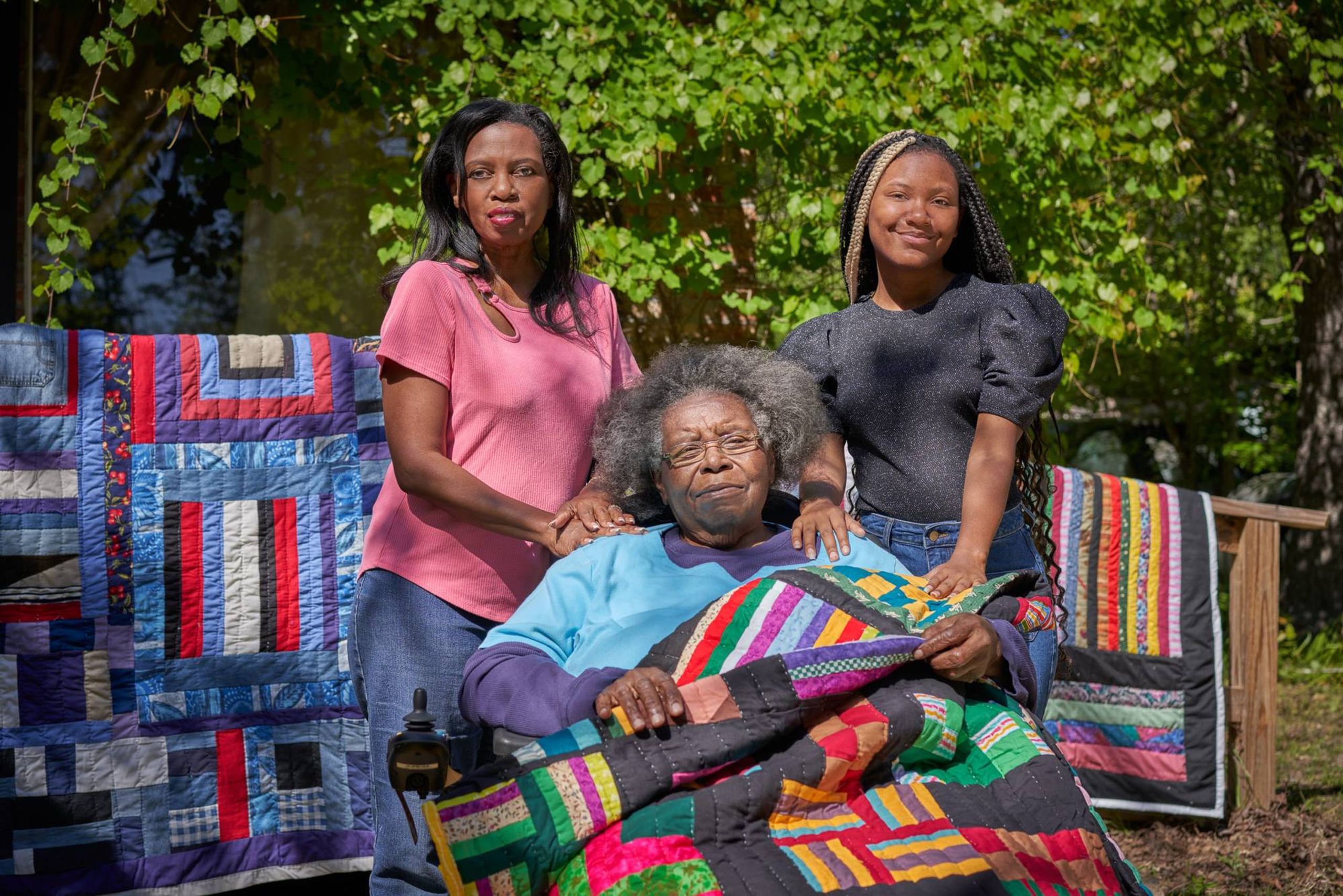
Deep in the Black Belt of western Alabama, named for a curve in the Alabama River, lies Gee's Bend. "It's a small community," says Mary Margaret Pettway, 60, who was born and raised there. "Growing up, I learned how to sweep yard, brush brooms and draw water from a well — things that have become lost arts."
There's one particular art form she learned early, though, that has only continued to thrive: Quilting.
The bold and spontaneous style of Gee's Bend quilts emerged in the early 19th century, flourished over 100 years later amid the Great Depression and acquired new significance in the 1960s. As community members advocated for their civil rights and ferried across the Alabama River to register to vote, local authorities cut off residents' transportation, sequestering them. Resources became scarce, so the women of Gee's Bend formed a quilting cooperative as a means of commerce and solidarity.
Now, the quilters of Gee's Bend — past and present — have received worldwide acclaim. Their work appears in the permanent collections of over 30 major art museums. They've debuted their creations in the runway shows and ready-to-wear collections of luxury designers. They run online stores and conduct workshops and retreats. Several quilters display and sell their work at the annual Gee's Bend Airing of the Quilts Festival, co-hosted by The Souls Grown Deep Foundation.
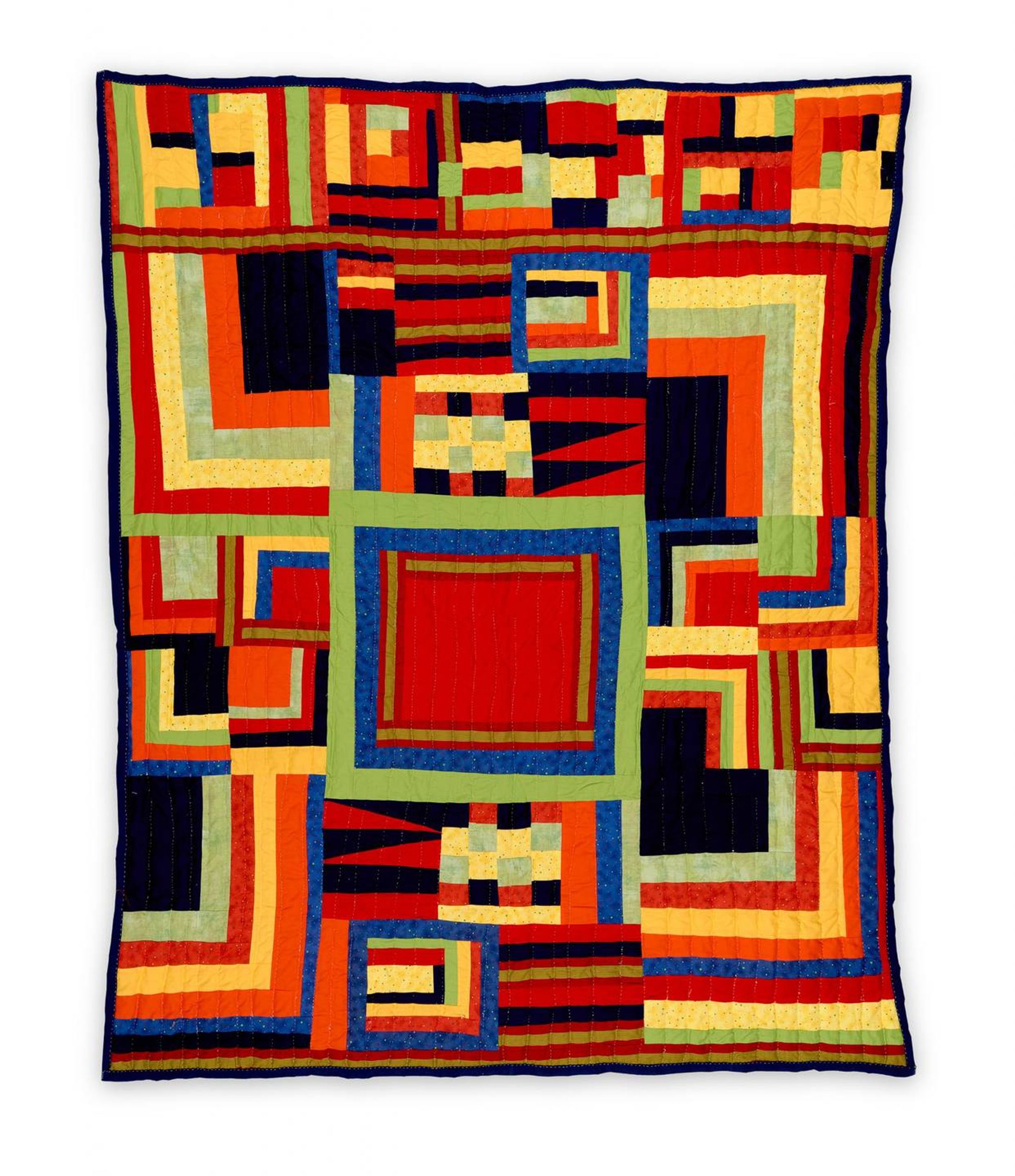
Mary Margaret, a fourth-generation quilter who serves as chair emerita of Souls Grown Deep, says the best quilts she's made are variations of the ones her mother, Lucy T. Pettway, created. "She called one quilt the 'Devil's Walking Stick,' because it gave her the devil to put together," Pettway explains, laughing. "The other is 'Birds in the Air.' I recreated them both, but with my own touch."
Three of Pettway's contemporaries — Tinnie Pettway (a common surname among Gee's Bend residents), her daughter Claudia Pettway Charley and granddaughter Francesca Charley — further represent the intergenerational power of Gee's Bend quilting. Tinnie learned to quilt as a child when her mother forced her to as punishment. Claudia didn't start until her late thirties; her daughter Francesca picked up quilting during summers spent with Tinnie.
Below, the family discusses what they've learned from each other about the craft, as well as their dedication to continuing it. "This is such a beautiful thing we have created," Francesca tells Next Avenue. "It's amazing that it is finally getting the recognition it deserves."
Tinnie Pettway, 87
Next Avenue: What was growing up in Gee's Bend like?
Tinnie Pettway: It's unimaginable to other people, the way we grew up. Some of the crazy things that went on, it would take a lifetime to tell you. We couldn't eat milk and fish at the same meal because it, supposedly, will kill you. So whenever we had fish, we couldn't have milk. And when we had milk, we couldn't have a slice of fish.
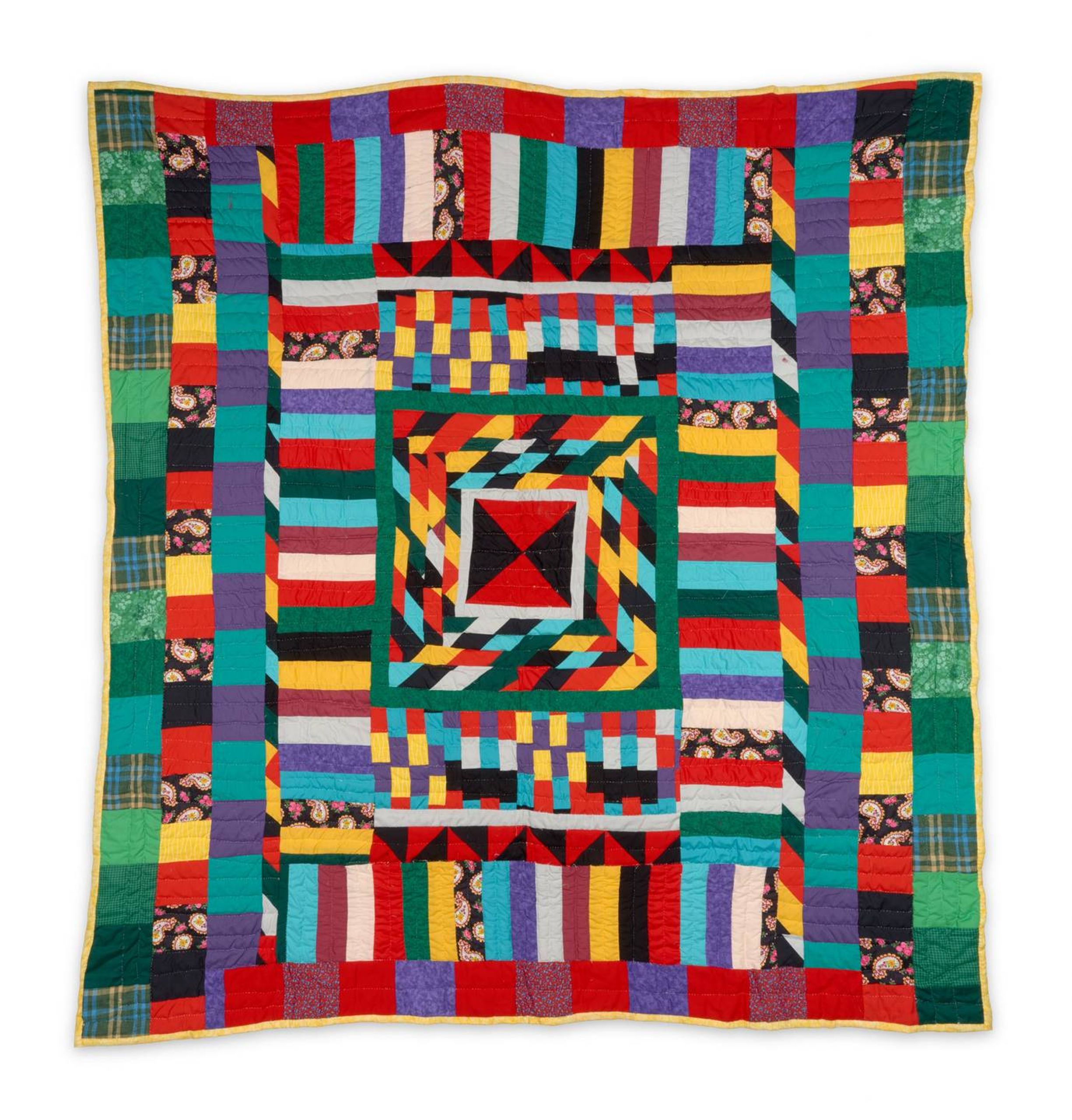
A boy couldn't step over a broom or a stick. It was supposed to do something to him. He wouldn't have no kids. So we had many, many things like that, that our parents had learned.
What else?
There was nothing, very little, that wasn't good to eat. We grew up eating a lot of animals — birds, raccoons, opossum, the squirrels and the rabbits. The cinnamon and plums just grew themselves. Nature fed us.
I am the oldest of five, and for as long as I can remember, I had a responsibility. My mom had me babysitting. She would sit me on the floor and put that young baby in my lap, and his head would fall one way. I couldn't keep those little things straight in my lap. And I had to sit there and hold him where my mom could see me while she cooked or did other chores. And she would say, 'Don't hurt my baby.'
What are your earliest memories of quilting?
I was seven, eight, years old when my mom started me. It was a thing that the women did, and the girls had to learn to do, because that's what we had to keep warm. Every summer when the crops was laid by, no one was in the field. The women quilted, and with whatever they could find. They didn't have material, nothing was matching. They just sewed together what they had. So my mom just kept at us until we learned.
Talk about something you've made recently.
Our quilts rarely have a special name, although sometimes we name our quilts when we get finished. But it's not a name you would expect to hear. I named one quilt 'Tra-la-la' because it looked like piano keys. And I got a letter from a lady yesterday saying she loved the name.
How is your personal style of quilting similar to or different from what you were taught?
It's somewhat similar now because we don't go by a pattern. We have it in our mind what we want to do. We lay it out, we look at it, we like it. We say, 'that's good.' There are a few things like the house top and the nine patch — the main quilts of Gee's Bend. But we make them like we want to.
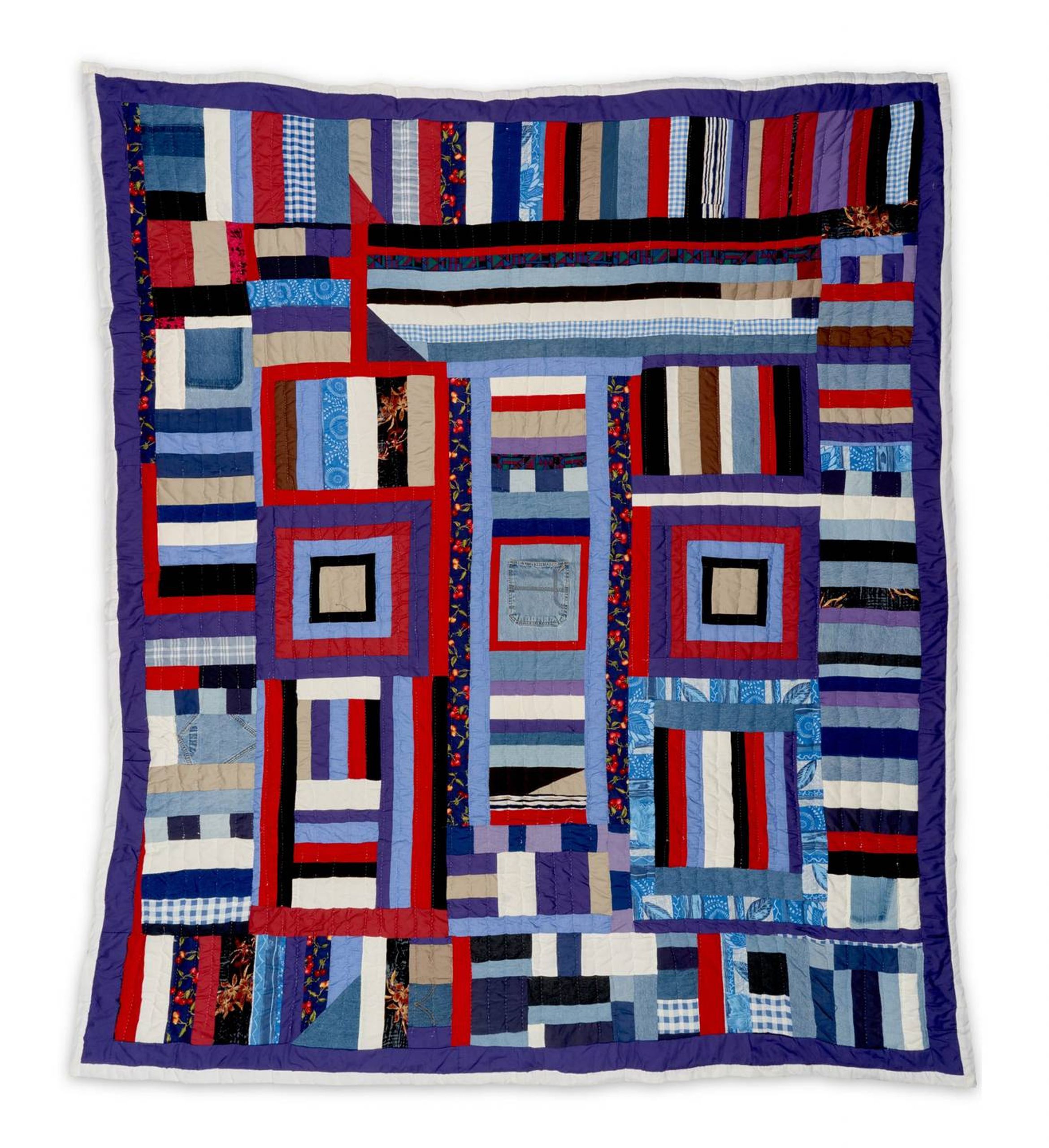
And now, we have the material. We can choose how we want the colors to blend. In my time, we didn't know what blending was. There was no such thing. And there was one machine. My mom used that machine. Even so, most quilts were done by hand.
Now, we put the quilt together with the machine sometimes. It's quite different and much more enjoyable, especially [from] when I was a kid, because I had to do it when I was being punished. I was made to leave what I wanted to do, which was play outside, and sit in the house with the old ladies and quilt. [Laughs]
So it doesn't feel like a punishment anymore?
Now I enjoy quilting. And it's competitive, right? All the rest of the quilters, we call one another, see how we doing. And because I'm the oldest one, it certainly keeps me on my Ps and Qs, trying to keep up with these young quilters. And I love to do better. I'm not saying I do. But I'm always trying to do a better job, because of my age.
Claudia Pettway Charley, 58
Your experience growing up in Gee's Bend was probably pretty different from your mother's.
Definitely different. We were a very close-knit community and everybody knew everyone. We were very religious; I was baptized in a creek. I didn't realize whether I was rich or poor. We were just people. Everybody shared. Being an only child, I was pretty independent. It taught me a lot about life and I wouldn't change it for the world.
But people in my generation, we had to leave Gee's Bend to go find jobs. Most people, once they graduated high school, would go to places like Camden, Selma and Montgomery to work. At that time, it only left a certain group of people, which were our parents' age, in the community.
We got married, some of us, had our own lives and families. But while that was happening, people was still quilting. The quilting never stopped.
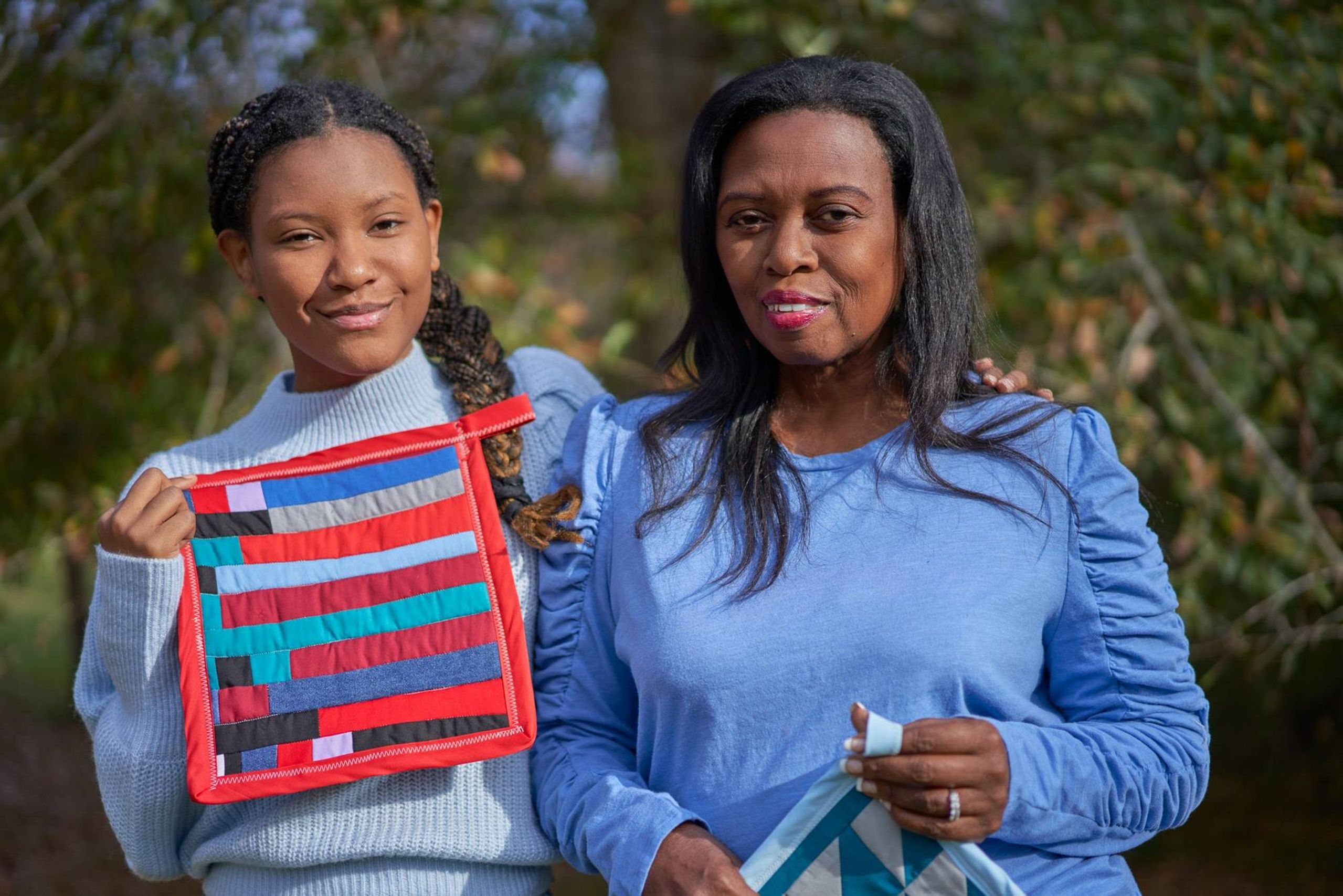
Talk about how you became a fourth-generation Gee's Bend quilter.
I am a very late bloomer when it comes to quilting. I was probably in my late thirties when I made my first quilted piece.
When I was a child, I would play under my grandma's quilting frame. Several of the ladies in the community would come over to Grandma's house and they would all be quilting together. They would have the quilting frame hung in the house, and they would work on one person's quilt at a time. So I would be underneath, just watching the needle come back and forth, back and forth.
The idea with Gee's Bend quilting is that it will continue through the next generation, and then the next generation. I just started very late in the game. I design quilts much better than I make them. And today I'm still learning. I'm slow. Every day I learn something new.
How would you describe your quilting style?
A combination of traditional and abstract. Most of my pieces will have some of the common Gee's Bend patterns. But for the most part it will have a lot of what I like to call 'color bundles.' I may only use two colors on a huge portion of my quilt. And the rest of it may be colors that blend or coincide with those.
I just like to capture a person's imagination. Each person may see something totally different. And making each quilt is totally different, depending on the day, depending on what's available as far as fabric and colors. I do love a lot of brights. I'm very big on bold. Anything that will stand out.
You've mentioned your love of color. What about materials?
The corduroy, the denim, those are our favorites, because that's what we had back in the day. That's our history — materials from jeans, from the overalls the men would wear when they would farm. And sometimes the material was limited. The women would find feed sacks for the cattle or the hogs, and they would wash those, and use those to put in the quilts.
There wasn't no fancy material. We didn't know anything about silks or satins.
Say more about the future of Gee's Bend quilting.
It's not something we could ever stop. It's in such high demand. People love Gee's Bend. They're amazed at the artistry. The quilts have made a great name for this community, for Alabama. You could say we have some of the most sought-after quilts in the world.
We are still traveling, doing tours and exhibits. It brings revenue to the community. Back then, there weren't many jobs where women actually made money. Now, we're looking at the possibility of financial growth from the quilts.
It's definitely important for the craft to continue, so future generations can see the importance of their heritage through quilting and what it meant to the older generation. Our quilting is about survival.
Francesca Charley, 21
When did you learn to quilt?
During summer visits with my grandma. She had me working on simple blocks and those blocks helped me learn the techniques I still use to this day, like how many stitches per inch and how to 'knot off' the end of a full stitch.

I still remember the day I finished my first potholder. It was a simple nine-block design but it was mine.
What, for you, are some of the most unique aspects of Gee's Bend quilting?
Well, I know for other artists, they abide by so many rules and if you mess up, you have to start all the way over. But for Gee's Bend quilting, you barely have rules. You can put together any colors and pieces you want and everyone always ends up loving them.
That's why quilting isn't very stressful, because there aren't any guidelines. The only mistakes you can make are sewing two pieces backwards and maybe some stitching mistakes, but when it comes to your creativity, there are no limits.
In what way is your style of quilting in line with what you've been taught? How does it differ?
My grandma is able to make a lot of quilts and nothing on it is symmetrical. For me, that is kinda hard. I personally love the symmetrical look and incorporate that a lot in my work. I am, however, trying to break out of that because I know I am able to do so much more by just being totally free with my designs, and not caring about how even they are.
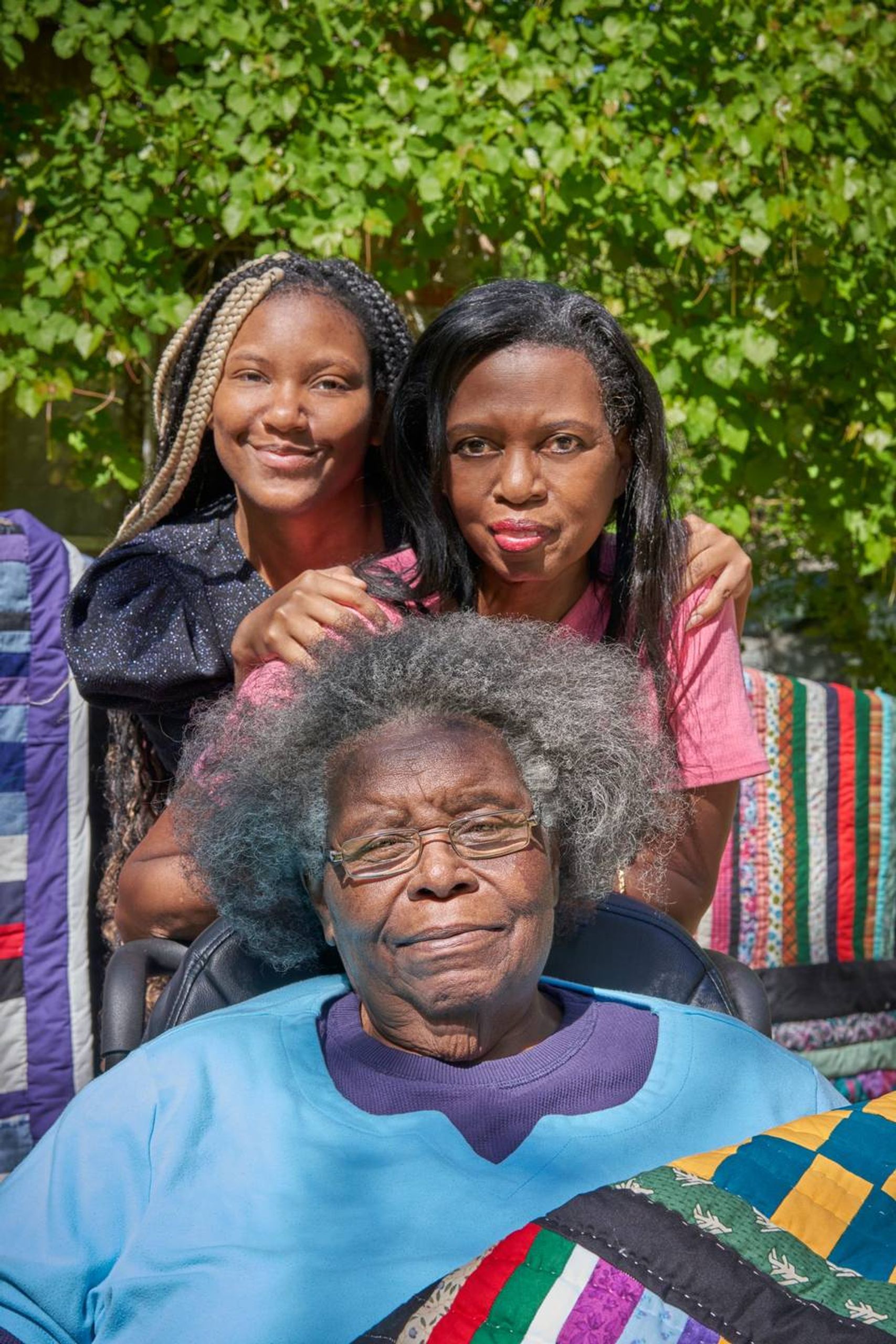
What are your favorite tools and/or fabrics to work with?
Cotton, one-hundred percent! Cotton has never done me wrong, or the machine wrong. It's not too hard and not too soft. If a material is too soft, like silk for example, it makes it really hard for the machine. It is so light, the machine gets tangled.
I also love working with quilting hoops whenever I am putting wall art together. And I have a tool that can get stitches out in a flash — that always comes in handy. But my best tool will always be my hands; they are capable of many things.
Describe the work you're most proud of, or that's been most memorable for you to create.
I partnered with [outerwear brand] Marfa Stance on a project that required making a panel, and then my panel was turned into a beautiful jacket. Even though I didn't make the full jacket, my design was still represented and I couldn't believe what I was seeing.
I saw that the jacket sold quickly, and I hope whoever is wearing it loves it to pieces because I sure do! That project was also very hard to work on because of the fabric that was provided, so it was a huge challenge for me, but worth every second.
Why is it important for you to continue this craft?
Because these women have put their heart and soul into these pieces! It is amazing that it is finally getting the recognition it deserves. If I didn't continue it, I know it would die out and I can't leave people wondering what happened.
Then I know other people would still attempt to make knock-offs, and it would hurt my soul if I just let them do that when I stopped. This is such a beautiful thing we have created; we can't let it die.
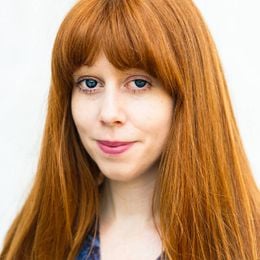
Sabrina Crews is a digital editor for Next Avenue and a former reporting fellow with the Robert N. Butler Columbia Aging Center and Columbia Journalism School. Read More

